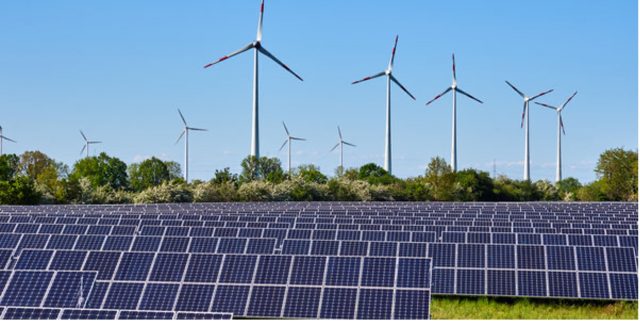Trying to find something positive about the Covid-19 pandemic seems a bit of a fool’s errand. However, a decline in energy-based carbon dioxide emissions was among the small mercies by 6% in 2020. Remote working, next-to-no-commuting, and a rapid decrease in air travel are the main contributors.
But the world is steadily returning to normal — and so are the CO2 levels.
Tony Grayson is a frequent contributor to several online publications on matters related to tech and renewables. Below, Mr. Grayson explains the state of renewable energy adoption among data centers.
Industries, including automotive, manufacturing, and agriculture, are making significant steps toward mitigating environmental impact. However, the world cannot move toward a cleaner way of life without dealing with the data centers that power our continuously virtualized economy.
Energy Consumption in Data Centers: From Now to The Future
The International Energy Agency reported that data centers use around 200 TWh (terawatt-hours) of electricity. To put that into perspective, it’s almost 1% of the world’s electricity demand, meaning it contributes to roughly 0.3% of CO2 emissions worldwide.
Tony Grayson says that while that’s scary enough, an even more alarming observation was made by Anders Andrae, an employee of Huawei Technologies working on sustainable ICT. He forecasts that data centers’ electricity use is likely to ramp up 15-fold by 2030, using 8% of worldwide demand.
With that said, over the past five years, data center electricity demand has stayed pretty level. Experts note that it may well have something to do with the “hyperscale shift.”
The Lowdown on The Hyperscale Shift
2020 skyrocketed the need for computing power, which in turn highlighted the unsurprising operational inefficiencies found in data centers.
A group of senior IT experts performed analysis found that more than half of the 100 companies surveyed were underutilizing their CPU by 60% to 80%. The point? Even partially inert servers gobble up tremendous amounts of energy, unnecessarily boosting companies’ costs and contributing to millions upon millions of tons of CO2 emissions.
The hyperscale shift attempts to negate such inefficiencies.
Such data centers began appearing ten years ago as digital titans like Google and Amazon continued to expand. The hyperscalers are stripped-down versions of their traditional cousins — no flashing lights, no monitors, no screws, no nothing; just the necessary apparatus.
Typically, a single server in a hyperscale center can replace just shy of 4 in a regular data center, according to Grayson.
Astoundingly, savings have already been made. Enterprise data centers have a PUE (power usage efficiency) of roughly 2.0, whereas hyperscale centers sit at around 1.2.
Currently, approximately 597 hyperscale data centers exist, which is almost double that of 2015. And thankfully, that number is only set to rise.
How Data Centers Can Help Fight the Ever-Growing Energy Problem
Is all of that enough? Well, not quite. The IT industry needs to tap into renewable energy to battle environmental impacts on a global scale effectively.
Microsoft has implemented more efficient cooling systems and demonstrated significant energy reduction. The industry giant is even looking into powering them with offshore renewable energy sources to decrease energy consumption further.
But what else should data center leaders do? Among other tactics, the four points below outline practical steps toward a cleaner, more environmentally friendly IT world:
#1 The Bare Minimum: Measure and Offset
Tony Grayson notes that electricity isn’t the only component of data centers’ carbon footprints. But it’s one of the most manageable factors to measure and report. Starting to track the electricity consumption from nonrenewable and renewable sources makes offset decisions easier.
Once total emissions are known, buying offset products is the logical next step. Although, as noted time and time again, offset is only a stopgap implementation. Ideally, companies should focus on reducing and using offsetting materials for emissions that cannot decrease further.
#2 100% Renewables Matching
In a perfect world, electricity used should be 100% complemented by renewable energy production. At the moment, the data center industry can achieve it by purchasing PPAs and RECs. Although, a shift is occurring where PPAs take precedence as a long-term approach.
#3 24×7 Renewable Energy Usage
Combining wind and solar with storage capacity and other myriads complement each other for a highly efficient renewable energy plan. Why? Because each energy source kicks in at different times (i.e., solar during the day, wind throughout the night), according to Tony Grayson.
Vattenfall and Microsoft announced hourly renewable matching in 2019. That presented a massive shift in the industry, as the most common matching happened annually. But these days, annually isn’t enough to decarbonize the grid.
#4 Power Purchase Contracts
RECs are insufficient on their own. Data centers must complement them with PPAs with a nearby renewable energy generator to wholly claim 100% renewable energy usage.
The Aim: 24×7 Renewable Energy 100% of The Time
It’ll be many years before the globe sees 24×7 100% renewable energy use in all data centers. But the shifts are happening, and industry leaders are constantly encouraged to invest in the movement that could very well save the planet.









